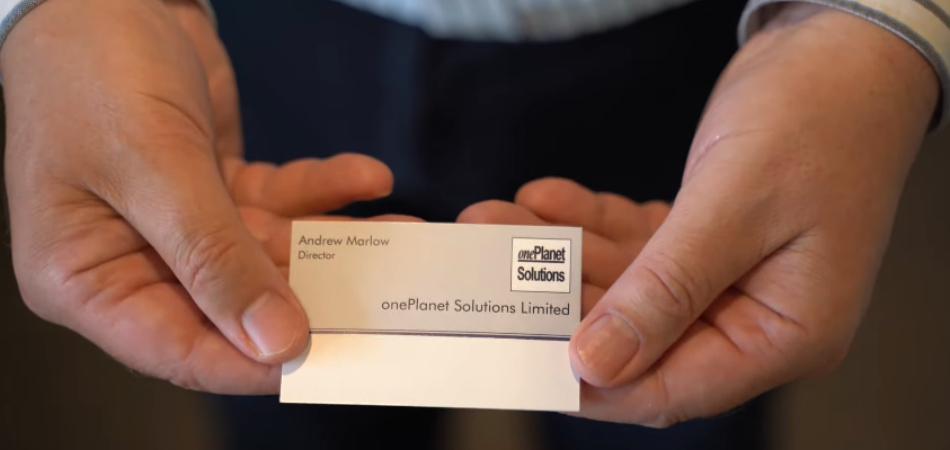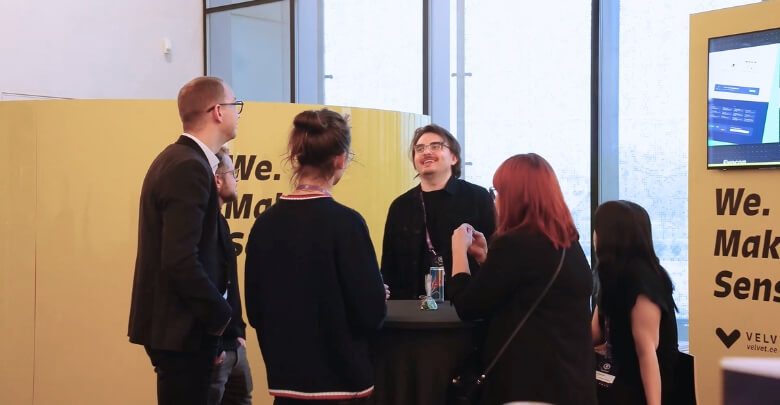Navigating a business conference can feel like stepping into a bustling marketplace of ideas and opportunities. One essential tool for making connections and leaving a lasting impression is your business card. The question often arises, How Many Business Cards To Bring To A Conference?
To make the most of your networking experience, aim to bring at least 50 to 100 business cards. This quantity strikes a balance between being prepared for various encounters and avoiding unnecessary bulk. Remember, you want to ensure you have enough cards for meaningful conversations without feeling overwhelmed.
Ultimately, the goal is to facilitate connections that can lead to potential partnerships or collaborations. Having a well-prepared stack of cards allows you to engage confidently, fostering relationships that extend far beyond the conference walls.
Why Are Business Cards Important to Network at Conferences?
Business cards are small, printed cards that typically include a person’s name, job title, company name, contact information, and logo. During networking events and marketing conferences, business cards physically represent a person and their business and are often exchanged.
These cards are important in networking at business conferences. They provide a convenient way to exchange contact information and establish a professional connection. It will make your business or organization known in the international business and marketing arena. For instance, at events like the Canada Business Conference 2024, having well-prepared business cards can enhance your networking opportunities.
By exchanging business cards, conference attendees quickly and easily follow up with each other after the event. Whether for potential partnerships, job opportunities, or to stay in touch.
In a crowded marketing conference environment, it is difficult to remember everyone’s names and details. In that case, business cards serve as a tangible reminder of the people attendees have met and their conversations.
How Many Business Cards to Bring to A Conference?
When it comes to bringing business cards to a conference, there are some recommended numbers to consider. When it comes to attending a business conference, one of the most crucial yet often overlooked aspects is how many business cards to bring. The right number can significantly impact your networking effectiveness, ensuring you don’t miss out on valuable connections. While there’s no one-size-fits-all answer, several factors can guide your decision.

Best Practices For Bringing Business Cards to A Conference
It’s always better to have more business cards than you need, but bringing too many is a burden. As a general rule, you should bring enough cards to give to everyone you meet, plus some extras. Consider bringing different designs or colors to help your card stand out.
Suggested Number of Business Cards Based On Conference Size And Length
The number of cards you should bring will depend on the size and length of the conference. If it’s a one-day event with only a few attendees, you only need to get 50–100 cards. For a multi-day business conference with hundreds of attendees, bring 250–500 cards.
Factors To Consider When Determining How Many Business Cards To Bring
Your business card acts as a key tool for networking, making a lasting impression, and opening doors to future opportunities. However, determining the right number requires careful consideration of several factors. Here are the key elements to keep in mind as you decide how many business cards to pack for your next conference.
Conference Size and Format
The size of the conference plays a crucial role in deciding how many business cards you should carry. Larger conferences with thousands of attendees naturally present more networking opportunities, increasing the chances that you’ll need a higher volume of cards. Conversely, smaller events may foster deeper, more meaningful connections, where quality is more important than quantity.
Also, consider the format of the conference. Events that include multiple networking sessions, workshops, and social gatherings will likely require more cards than a single-day event focused solely on keynote speeches.
Your Goals and Objectives
Before attending the conference, clarify your goals. Are you looking to establish new business partnerships, find potential clients, or simply expand your professional network? If your goal is to make significant connections with industry leaders or potential clients, focus on quality interactions rather than the number of cards you distribute.
If you’re planning to meet many people and engage in various discussions, it’s wise to have more cards on hand to ensure you don’t miss opportunities.
Duration of the Conference
The length of the conference can significantly influence your card requirements. Multi-day conferences typically provide numerous opportunities for networking and interactions. You may need more cards if you plan to attend various sessions, workshops, and social events throughout the event.
If the conference spans several days, ensure you have enough cards to last you. Consider packing extra cards to avoid the frustration of running out midway through the event.
Your Role at the Conference
Your role in the conference can also dictate how many business cards you need. If you are a speaker, panelist, or workshop leader, you may attract more attention and inquiries, leading to a higher demand for your cards. Participants often seek to connect with speakers for insights, follow-ups, and potential collaborations. In such cases, it’s best to overestimate the number of cards you’ll need.
Your Networking Strategy
Consider your networking strategy when deciding how many cards to bring. If you plan to engage in deeper conversations with a few individuals, focus on a smaller number of cards that you can distribute selectively. However, if your approach is more about meeting as many people as possible, prepare for a larger quantity. Having the must-have items for a business conference ready will also enhance your networking opportunities.
Personal Connections and Follow-Ups
If you have specific individuals or companies you aim to connect with at the conference, ensure you have enough cards for those targeted interactions. It’s often beneficial to research the attendees beforehand, so you know who you’d like to meet. This way, you can prepare accordingly, ensuring you have enough cards to exchange with those key contacts.
Digital Alternatives
In today’s digital age, many professionals are opting for digital business cards or contact-sharing apps. These options can supplement your physical cards. Having a digital version can save space in your pocket and allow you to connect with people even if you run out of physical cards.
Backup Plan
Despite careful planning, you might still run out of cards during the conference. Always have a backup plan. Keeping a digital copy of your business card on your phone is a great way to ensure you can still share your information. Alternatively, carrying a few extra cards in a designated spot can prevent last-minute scrambles.
Estimating a quantity
While the previous factors can guide your decision, a general recommendation is to bring 50 to 100 business cards for a standard conference. If you anticipate being particularly active in networking or if the event is exceptionally large, consider bringing 200 cards or more.
Determining how many business cards to bring to a conference involves a careful analysis of multiple factors, including the size of the event, your goals, the duration, and your role. By considering these elements, you can find a suitable number that ensures you are prepared for various networking opportunities while maintaining the quality of your interactions. Ultimately, your business card is more than just a piece of paper; it’s a gateway to building lasting professional relationships.
How to Manage Your Business Cards at the Conference?
It’s essential to have a system in place for managing your business cards at the conference. Use a cardholder or a small binder to keep your cards organized and easy to access. Make notes on the back of each card to help you remember where you met the person and any other important details. It’s also a good idea to follow up with the people you meet as soon as possible after the conference to help solidify the connections you made.
Designing And Printing Business Cards For Conferences
Designing and printing high-quality business cards is crucial in ensuring a successful conference networking experience.
Importance of Professional Design And Colors
For your business card to stand out among the many cards, you should have a professional design that includes eye-catching colors and graphics. This will make your card more memorable and increase the chances of people keeping it and contacting you later.
Key Elements To Include In A Business Card For Conferences
Your business card should include your name, job title, company name and logo, phone number, email address, and website. Include your social media handles and a brief description of what your company does. Keep the design clean and easy to read.
Options For Printing Business Cards
Many options are available when printing your business cards. Choose from various high-quality card stocks and finishes to create a professional and memorable card. Consider using environmentally friendly digital business cards that can be easily shared via text or email.
Tips For Using A Business Card App
Business card apps are convenient for managing contacts and sharing information at conferences. These apps help you quickly scan and store business cards, organize contacts, and send follow-up emails. When using a business card app, it’s vital to ensure it is reliable and secure.
How to Use Business Cards Effectively At Conferences?
One of the essential tools for successful networking is a well-designed business card. However, simply having a stack of cards is not enough. Knowing how to use them effectively to make meaningful connections and achieve your networking goals is crucial.
- The Importance Of Following Up And Staying In Contact: The real value of attending a conference and collecting business cards is in the follow-up. After the conference, reach out to the people you met and continue building relationships with them. This helps you expand your network, build your reputation, and generate new business opportunities.
- Strategies For Organizing And Following Up On Conference-Related Contact: One strategy for organizing your contacts is creating a contact list or spreadsheet with their names, companies, and contact information. Make notes about your conversations with them and any follow-up actions you need to take. After the conference, send personalized follow-up emails and connect with each person on LinkedIn.
- Using Business Cards To Make Meaningful Connections And Start Conversations: Business cards are a great conversation starter and help you connect with other conference attendees. When exchanging cards, take the time to briefly talk with the other person and ask them about their business and goals. This can help you find common ground and start building a relationship.
- Using Business Cards To Attract And Retain Customers And Vendors: Business cards are also used as a marketing tool to attract and retain customers and vendors. Use your business card to showcase your brand and highlight your unique value proposition. Consider including a call-to-action or special offer on your card to encourage people to contact you and learn more about your business. Use your business card to promote your social media channels or website and encourage people to connect with you online.
Additional Tips For Conferences
Attending global conferences like International Business Management and Economic Conference in Canada is a great way to network and gain insights and industry knowledge. However, to make the most of these events, come prepared with more than just business cards. Below are some additional tips to help you maximize your time at conferences.
- Bringing Additional Items For Networking And Associational Events: Besides your business cards, consider getting other things to help you make connections at networking and associational events. For example, bring a small basket with promotional items or branded giveaways to attract people to your booth or table.
- Avoiding Blunders And Maximizing Valuable Teaching Time: To get the most out of a conference, avoiding common blunders and maximizing your valuable teaching time is crucial. For example, attend sessions relevant to your business and goals, and avoid spending too much time socializing or getting distracted by other activities. Wearing business casual for a conference can also help you make a good impression on other attendees.
- Using Brochures And Promotional Items To Supplement Business Cards: While business cards are essential for networking, brochures and other promotional items are helpful supplements. For example, hand out brochures or flyers that provide more information about your business or services.
- Best Practices For Receiving And Exchanging Business Cards With People At The Conference: When receiving or exchanging business cards at a conference, it’s essential to be polite and professional. Ensure to read the card and take note of the person’s name and company. Take a moment to briefly converse with the other person and find common ground.
Frequently Asked Questions
Is it better to have too many or too few business cards at a conference?
It’s better to have a few extra business cards than to run out at a conference. You never know how many meaningful connections you’ll make. Having enough cards ensures you can share your information with everyone you meet, helping to maximize your networking opportunities.
What if I run out of business cards during the conference?
Running out of business cards during a conference can be stressful, but don’t worry! You can jot down your contact information on a notepad or use a digital business card app. Just ensure you follow up with new contacts later to maintain those valuable connections.
What should I include on my business cards for a conference?
Include your name, job title, company name, and contact information like phone number and email on your business cards. Consider adding your company logo and a brief tagline that highlights your expertise. This makes it easy for people to remember you and reach out later.
How can I effectively distribute my business cards at a conference?
To effectively distribute your business cards at a conference, engage in genuine conversations first. Then, offer your card with a smile, explaining your role briefly. Hand them out after meaningful interactions, and keep a few handy to share when the moment feels right.
Can I use digital business cards instead of physical ones?
Absolutely! Digital business cards are a convenient and eco-friendly alternative to physical ones. They allow you to share your information quickly through smartphones or email. Just make sure your digital card is well-designed and includes all the essential details, so it leaves a lasting impression.
Conclusion
Through the discussion above, we’ve tried to give a complete idea of how many business cards to bring to a conference. The importance of business cards in networking at conferences. We also recommended the number of cards to bring based on conference size and length.
Based on the factors we discussed, we recommend bringing 50 to 100 business cards to a conference, with additional cards if the conference is longer. It’s always better to have more cards than you need rather than running out and missing out on potential networking opportunities.
Business cards are vital for making connections and building relationships at conferences. Follow up with contacts after the conference and use your cards to make meaningful connections and start conversations.







